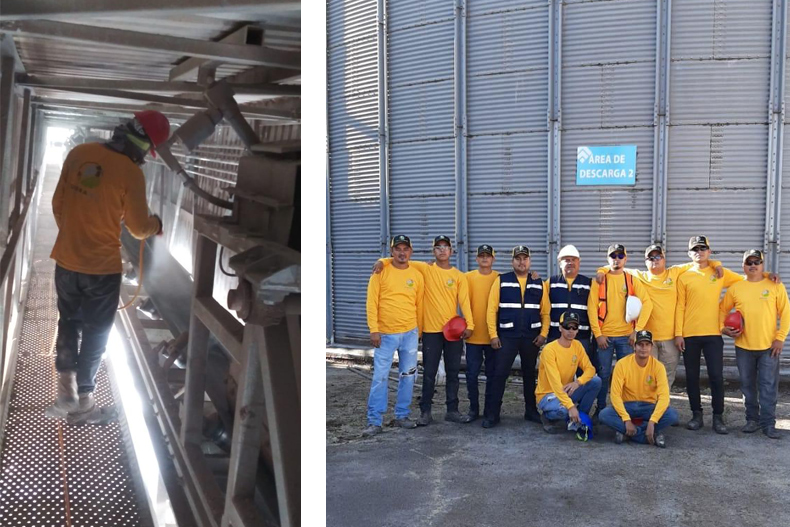Stored Grain Fumigation
Warehouse or silo fumigation
We start the fumigation operation of warehouses by evaluating the conditions of the structure where it is going to be fumigated (filtrations, leaks, ignition points, atmosphere monitoring, etc.), a sampling of the grain is made to determine the quality and incidence of live pests, as well as the taking of manual thermometry to identify heating sources in the grain.
The volume (ton. and/or m3 ) of the silo, warehouse or area where the fumigation will take place is calculated, since from this result the dose will be determined and the amount of fumigant to be used is calculated. Canvases are assembled (if required) and the structure is sealed (fans, vents, tunnels, air extractors, rakes, guillotines, etc.). Area cordoning off (danger strips, signs, ballots, etc.)

The personnel is distributed within the structure for the injection of the fumigant into the grain, prior to its sealing, tablets of fumigant are distributed in racks, fans and tunnels.
A thermo-nebulization is applied to the empty space through the hatch or through the door in case of holds and it is sealed. Leaks are detected in entrance doors, hatches, mainly by the phosphine detector.
A sanitary cord is applied to the perimeter of the silo or cellar. During exposure to the fumigant, the concentration of the phosphine is monitored with a draguer pump and high concentration colorimetric tubes.
Uncover
At the end of the exposure time (90-120 hrs), using the EPP, necks, tunnels, hatches, guillotines, rakes, doors, etc. are uncovered, the interior of the structure is ventilated until the phosphine concentration levels are below 3 ppm, the canvas is removed from the seal and the grain is sampled to verify the effectiveness of the fumigation and the results are recorded in a quality report.
A thermo-nebulization is applied to the empty space, tunnels and fans, as well as a sanitary cord to the outside of the structure.
With the activities of uncovering, sampling, cordon sanitaire and thermo-nebulization, the process of fumigation is completed.


